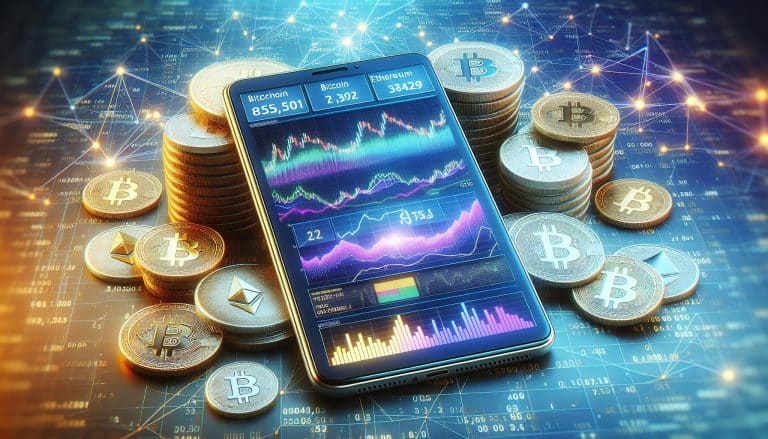Xrp Utility And Demand
Ripple is a blockchain-based payment system and cryptocurrency that has seen explosive growth over the past few years. According to CoinMarketCap, XRP, the native currency of Ripple’s platform, was worth over $14 billion as of May 2021 – making it one of the most popular digital currencies in circulation. This article will explore XRP’s utility, its growing demand among investors and traders, its potential as a store of value, how it compares to Bitcoin, recent news stories about XRP, regulatory considerations for investors and traders interested in buying or selling XRP tokens, and tips for investing in XRP.
Overview of Ripple and XRP
Ripple, the real-time gross settlement system and remittance network, has been in operation since 2012 and uses its native currency XRP as a bridge asset to facilitate fast and cost-efficient cross-border payments. XRP is an open source cryptocurrency which enables international payments with digital transactions that are secure, cost effective, and quick. This utility makes XRP attractive for financial organizations looking to move money internationally with minimal fees and delays. The use of XRP as a bridge asset between different currencies provides a platform for efficient conversion of funds into different currencies when executing an international payment. This capability helps reduce costs associated with foreign exchange fees when making transfers across borders. By providing fast and cost-effective solutions for international payments, Ripple’s utilization of XRP has become increasingly popular among financial services companies worldwide – ultimately driving up demand for the currency.
XRP’s Utility
XRP is a cryptocurrency that utilizes blockchain technology to enable real time payments, connecting payment networks and digital asset exchanges across the globe. It has become a major player in the financial industry due to its ability to facilitate instantaneous global payments without any intermediaries or delays. This makes it an attractive option for those seeking fast and secure financial transactions with minimal fees. In addition, XRP’s decentralized nature also gives it an edge over traditional banking systems as it does not require trust from third parties when processing payments. All of these features have made XRP one of the most sought-after cryptocurrencies in terms of utility. As a result, there is a growing demand for XRP which will be discussed further in the following section.
Growing Demand for XRP
The increasing popularity of blockchain technology has led to a surge in interest for XRP, resulting in growing demand for the cryptocurrency. As individuals and institutions alike recognize the potential benefits of XRP, such as its alternative uses and scalability challenges, its use is becoming more widespread than ever before. This has created an environment where XRP can be used to facilitate faster payments and cost-effective transactions across borders. Additionally, this surge in demand has also driven up the price of XRP, making it an attractive investment option for many people. These factors have all combined to create a strong and growing demand for XRP that shows no sign of abating anytime soon. Moving forward, it will be interesting to see how this increased demand affects the future of XRP as a store of value.
XRP’s Potential as a Store of Value
As XRP continues to gain traction, its potential as a store of value has become increasingly apparent. When compared to other cryptocurrencies, the supply and demand dynamics of XRP make it better suited for long-term storage. The fixed total supply of XRP is much lower than that of Bitcoin, meaning it is immune to inflationary pressures caused by increased mining rewards in the same way Bitcoin is not. This also makes XRP less volatile than many other cryptocurrencies – making it more desirable as a store of value. In addition, because XRP transactions are settled in just seconds with a higher degree of safety and security than many other digital assets, it becomes more attractive for those seeking short-term investments or collecting digital assets as part of their portfolios. As such, the future looks bright for XRP as an effective store of value when compared to traditional currencies and other cryptocurrencies alike. With these factors taken into consideration, it is clear that XRP may be the best option for those looking for an alternative asset that offers stability and security over time. As a result, the demand for this cryptocurrency will likely continue to grow in the years ahead. With this in mind, we can now turn our attention to how XRP compares with Bitcoin when considering utility and demand metrics.
XRP vs. Bitcoin
Comparing XRP to Bitcoin in terms of utility and demand metrics, it becomes apparent that the two digital assets have different strengths and weaknesses. In terms of transaction speed, Bitcoin transfers take an average of 10 minutes to be confirmed, while XRP transactions are almost instantaneous. This makes XRP more suitable for faster transfer applications, such as payments or remittances. However, Bitcoin has a much larger user base and liquidity effects due to its high market capitalization. As a result, it is generally seen as a more secure store of value than XRP and its smaller market capitalization makes it more volatile.
The differences between these two cryptocurrencies can have profound implications on their respective utility and demand metrics in the future. It is important for investors to be aware of these distinctions when considering which digital asset best meets their needs. With this knowledge in hand they will be better equipped to make informed decisions about their investments going forward. Transitioning into the subsequent section about ‘xrp in the news‘, we will explore how recent events have affected the public perception of XRP as well as its potential growth prospects going forward.
XRP in the News
Recent news stories have highlighted the potential of XRP for financial transactions and its growth prospects. Financial institutions are increasingly looking at XRP as a viable option for facilitating international payments, given its low transaction fees and fast settlement times. Additionally, XRP has opened up new use cases that could prove to be highly beneficial in the future, such as its ability to enable near-instantaneous trading of different digital assets. The financial implications of this technology are vast, making it an attractive prospect for investors and businesses alike. As the demand for XRP grows, so too do the regulatory considerations that must be taken into account when considering its adoption.
Regulatory Considerations
The consideration of regulatory frameworks for the application of this technology has become increasingly important. With XRP’s utility and demand on the rise, understanding the financial and legal implications in different jurisdictions is key to successful implementation. Regulatory concerns are a top priority given that it can impact how the cryptocurrency is used and perceived by investors. Most countries have yet to create specific guidelines surrounding XRP or other virtual currencies, meaning that potential users must navigate existing regulations related to digital assets, securities, and commodities when making investment decisions. As regulatory clarity continues to develop across jurisdictions, it is essential for those considering investing in XRP to stay informed of these developments in order to make educated financial decisions. This transition leads into an overview of the many ways an investor can purchase XRP tokens as well as how they may be stored securely.
Investing in XRP
The examination of regulatory considerations for the use of XRP discussed the legal implications associated with investing in the cryptocurrency. Moving on from this, it is important to consider investing strategies when looking into XRP. When looking to buy XRP, there are numerous strategies that must be taken into account:
- Research potential buying opportunities and identify reputable exchanges.
- Assess both liquidity risk and market cap before making a purchase.
- Track XRP’s performance relative to other cryptocurrencies over time.
- Consider diversifying investments across multiple exchanges for added security and reduced risk exposure.
When purchasing XRP, understanding the different buying strategies available is essential in order to minimize any liquidity risks associated with this investment option. Investors should weigh their options carefully when deciding whether or not XRP is a good choice for them based on their individual financial goals and risk tolerance levels.
Frequently Asked Questions
What is the current price of XRP?
At the time of writing, XRP is trading at around $0.45 USD. There has been a general upward trend in its price over the past year, although adoption rates have had an impact on price trends.
What kind of return on investment can I expect if I invest in XRP?
Investing in XRP may be attractive, but it can also be risky. Market trends and liquidity risk should be considered before investing to ensure a realistic return on investment. While there is potential for high rewards, investors must weigh all possibilities carefully.
How is XRP different from other digital currencies?
XRP differs from other digital currencies in terms of transaction speed and liquidity benefits. It is faster than most of its peers, with lower fees, enabling quicker transfers. Furthermore, XRP has a large number of units in circulation which makes it more liquid than others.
What are the advantages of using XRP compared to other payment methods?
XRP offers numerous advantages compared to traditional payment methods such as increased security, faster transaction times, and enhanced privacy. These benefits provide users with greater peace of mind when making payments, reducing the likelihood of fraud or other malicious activities. Additionally, XRP transactions are usually processed more quickly than those made via other payment methods.
What are the risks associated with buying and selling XRP?
Investors in XRP face risk from the cryptocurrency’s volatility and exchange risk. There is potential for both losses and gains, depending on market fluctuations. It is important to consider these risks before investing.





 Bitcoin
Bitcoin  Ethereum
Ethereum  Tether
Tether  XRP
XRP  Wrapped SOL
Wrapped SOL  USDC
USDC  Lido Staked Ether
Lido Staked Ether  TRON
TRON  Dogecoin
Dogecoin  Cardano
Cardano  Figure Heloc
Figure Heloc  Bitcoin Cash
Bitcoin Cash  Wrapped stETH
Wrapped stETH  WhiteBIT Coin
WhiteBIT Coin  Wrapped Bitcoin
Wrapped Bitcoin  Wrapped eETH
Wrapped eETH  USDS
USDS  Chainlink
Chainlink  Binance Bridged USDT (BNB Smart Chain)
Binance Bridged USDT (BNB Smart Chain)  LEO Token
LEO Token  WETH
WETH  Zcash
Zcash  Monero
Monero  Stellar
Stellar  Coinbase Wrapped BTC
Coinbase Wrapped BTC  Sui
Sui  Litecoin
Litecoin  Ethena USDe
Ethena USDe  Hyperliquid
Hyperliquid  Avalanche
Avalanche  Shiba Inu
Shiba Inu  Canton
Canton  Hedera
Hedera  World Liberty Financial
World Liberty Financial  sUSDS
sUSDS  Toncoin
Toncoin  USDT0
USDT0  Dai
Dai  Cronos
Cronos  Uniswap
Uniswap  PayPal USD
PayPal USD  Polkadot
Polkadot  Mantle
Mantle  Ethena Staked USDe
Ethena Staked USDe  USD1
USD1  Pepe
Pepe  Rain
Rain  MemeCore
MemeCore